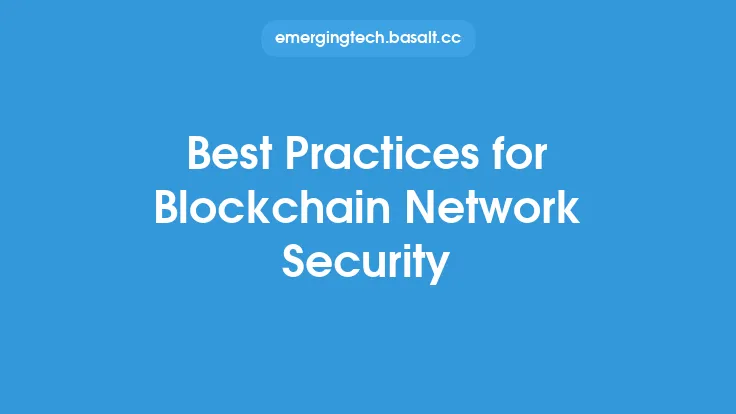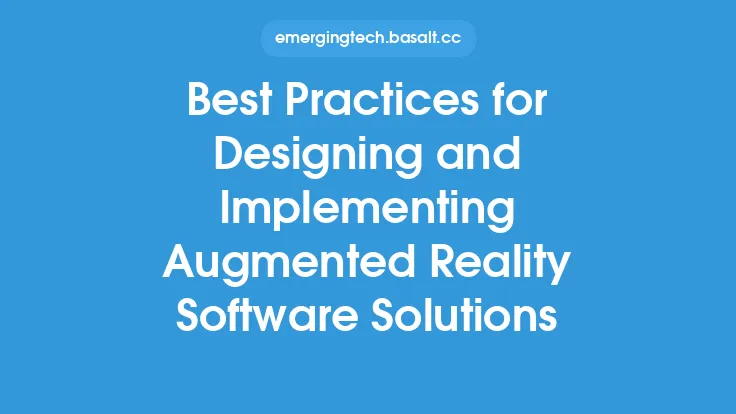Implementing effective blockchain governance is crucial for the success and sustainability of any blockchain-based project. Blockchain governance refers to the set of rules, processes, and protocols that govern the behavior of participants within a blockchain network. It encompasses decision-making processes, conflict resolution mechanisms, and incentive structures that ensure the integrity, security, and scalability of the network. In this article, we will explore the best practices for implementing effective blockchain governance, highlighting lessons learned from various blockchain projects and ecosystems.
Key Principles of Effective Blockchain Governance
Effective blockchain governance is built on several key principles, including transparency, accountability, decentralization, and inclusivity. Transparency refers to the openness and visibility of decision-making processes, ensuring that all stakeholders have access to relevant information. Accountability ensures that participants are responsible for their actions and decisions, promoting a culture of trust and reliability. Decentralization is a fundamental principle of blockchain governance, enabling distributed decision-making and reducing the risk of centralized control. Inclusivity ensures that all stakeholders have a voice and are represented in the decision-making process, fostering a sense of community and cooperation.
Establishing Clear Governance Structures
Clear governance structures are essential for effective blockchain governance. This includes defining roles and responsibilities, establishing decision-making processes, and setting up conflict resolution mechanisms. A well-defined governance structure ensures that decisions are made in a timely and efficient manner, minimizing the risk of disputes and conflicts. It also provides a framework for accountability, ensuring that participants are responsible for their actions and decisions. Furthermore, clear governance structures facilitate scalability, enabling the network to grow and evolve over time.
Implementing Incentive Mechanisms
Incentive mechanisms play a crucial role in promoting desired behavior within a blockchain network. These mechanisms can include token-based incentives, reputation systems, and social rewards. Token-based incentives, such as proof-of-stake or proof-of-work, encourage participants to contribute to the network's security and integrity. Reputation systems promote trust and reliability, enabling participants to build a reputation based on their behavior and contributions. Social rewards, such as community recognition or badges, foster a sense of community and cooperation, encouraging participants to engage in positive behavior.
Ensuring Regulatory Compliance
Regulatory compliance is a critical aspect of blockchain governance, ensuring that the network operates within the bounds of relevant laws and regulations. This includes compliance with anti-money laundering (AML) and know-your-customer (KYC) regulations, as well as data protection and privacy laws. Ensuring regulatory compliance requires a deep understanding of the relevant regulatory landscape, as well as the implementation of effective compliance mechanisms. This can include the use of smart contracts, decentralized identity verification, and other blockchain-based solutions.
Fostering Community Engagement
Community engagement is vital for the success and sustainability of any blockchain-based project. This includes fostering a sense of community and cooperation, encouraging participation and feedback, and promoting transparency and accountability. Community engagement can be facilitated through various mechanisms, including social media, forums, and community events. It is also essential to establish clear communication channels, ensuring that stakeholders are informed and engaged throughout the decision-making process.
Monitoring and Evaluating Governance Effectiveness
Monitoring and evaluating governance effectiveness is crucial for ensuring the long-term success and sustainability of a blockchain network. This includes tracking key performance indicators (KPIs), such as network security, scalability, and usability. It also involves conducting regular audits and assessments, identifying areas for improvement and implementing changes as needed. Furthermore, monitoring and evaluating governance effectiveness requires a deep understanding of the network's governance structure, incentive mechanisms, and regulatory compliance.
Lessons Learned from Blockchain Governance Implementations
Several blockchain projects and ecosystems have implemented effective governance structures, providing valuable lessons learned for the industry. For example, the Bitcoin network's decentralized governance structure has enabled it to maintain its integrity and security over time. The Ethereum network's use of smart contracts and decentralized applications (dApps) has facilitated a wide range of use cases and applications. The Cosmos network's implementation of a hub-and-spoke architecture has enabled it to achieve high scalability and usability. These examples demonstrate the importance of effective blockchain governance, highlighting the need for transparency, accountability, decentralization, and inclusivity.
Conclusion
Implementing effective blockchain governance is crucial for the success and sustainability of any blockchain-based project. By establishing clear governance structures, implementing incentive mechanisms, ensuring regulatory compliance, fostering community engagement, and monitoring and evaluating governance effectiveness, blockchain networks can ensure their integrity, security, and scalability. The lessons learned from various blockchain projects and ecosystems provide valuable insights for the industry, highlighting the importance of transparency, accountability, decentralization, and inclusivity. As the blockchain industry continues to evolve and grow, effective governance will play an increasingly critical role in shaping its future.





